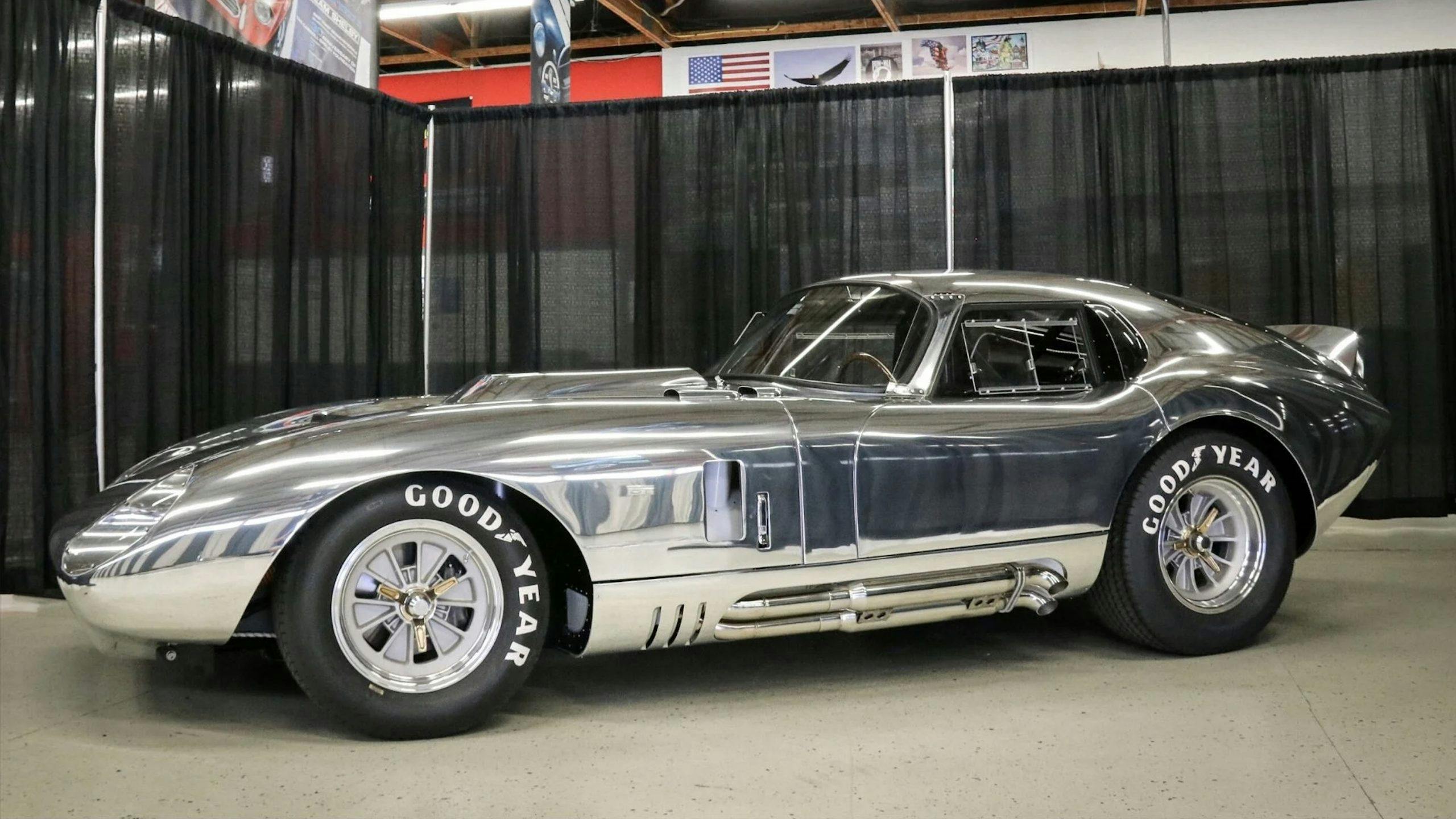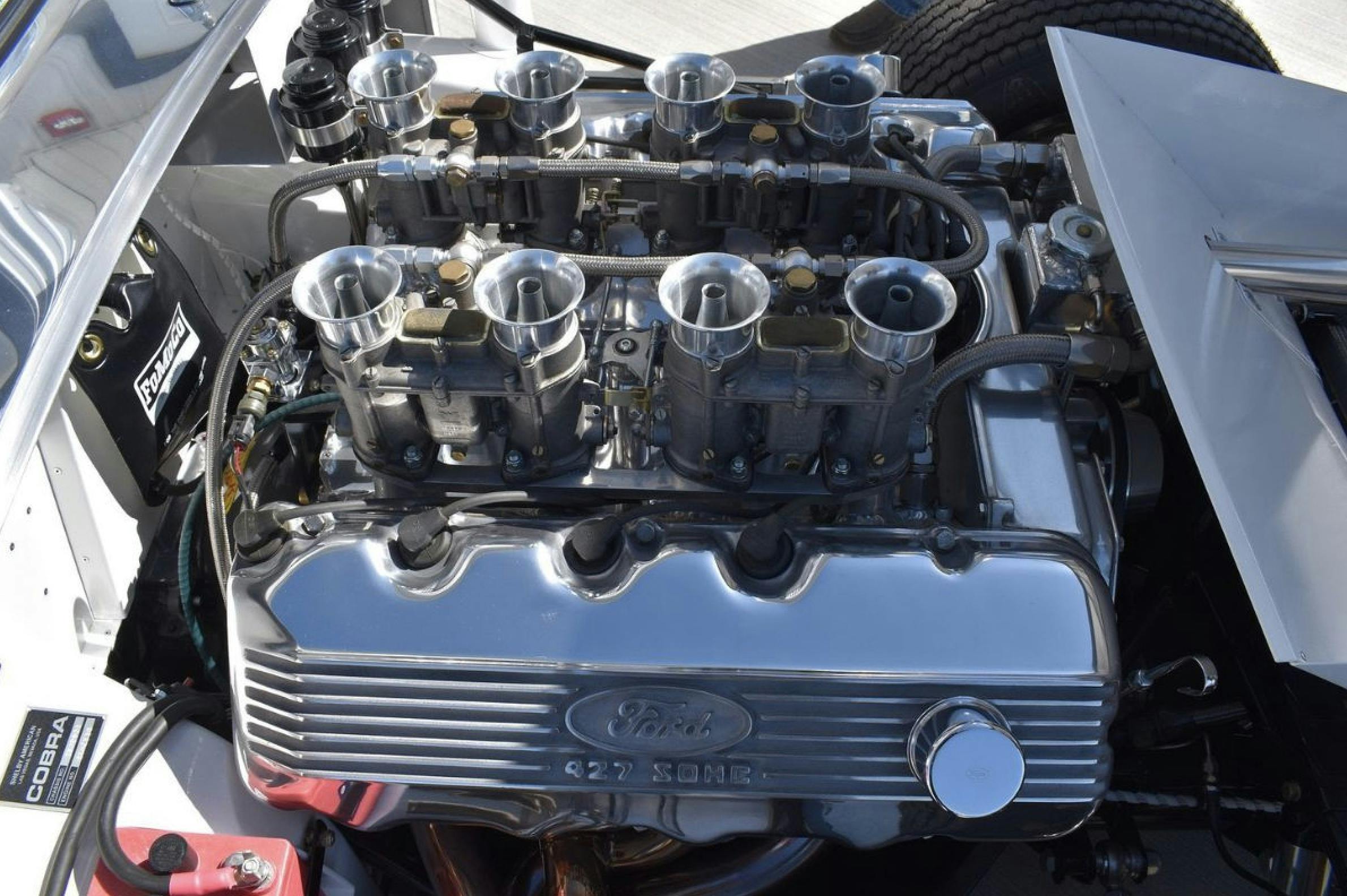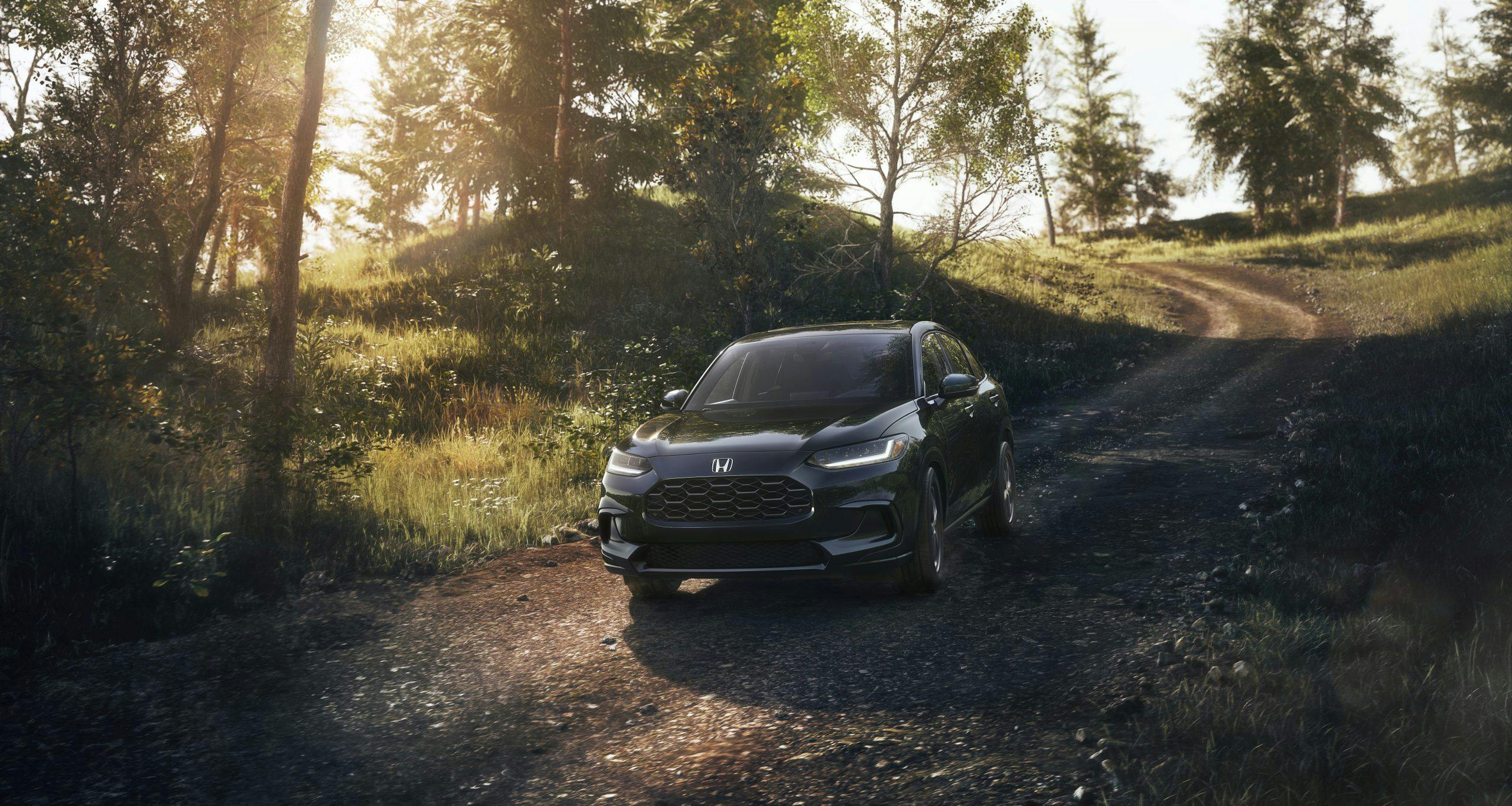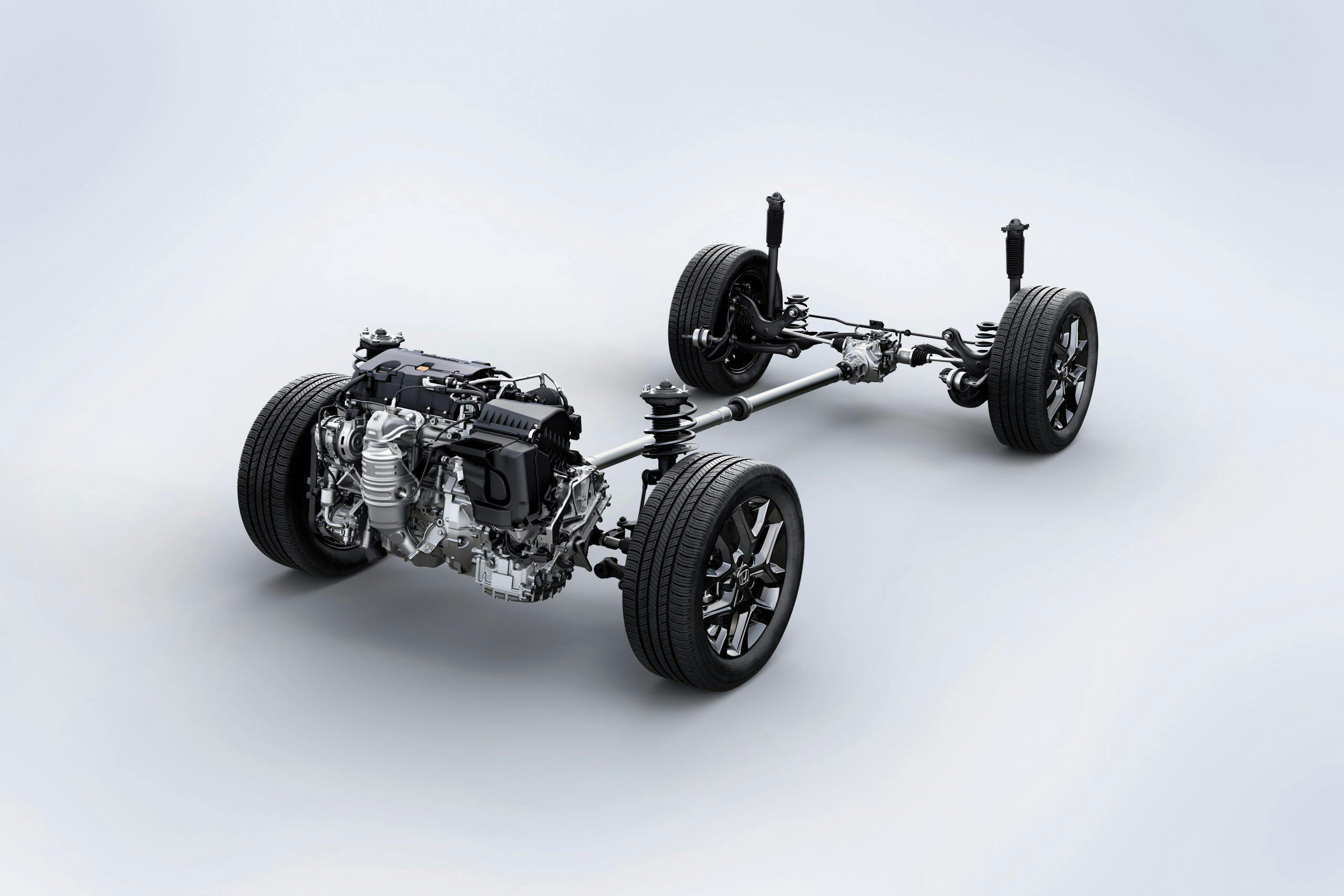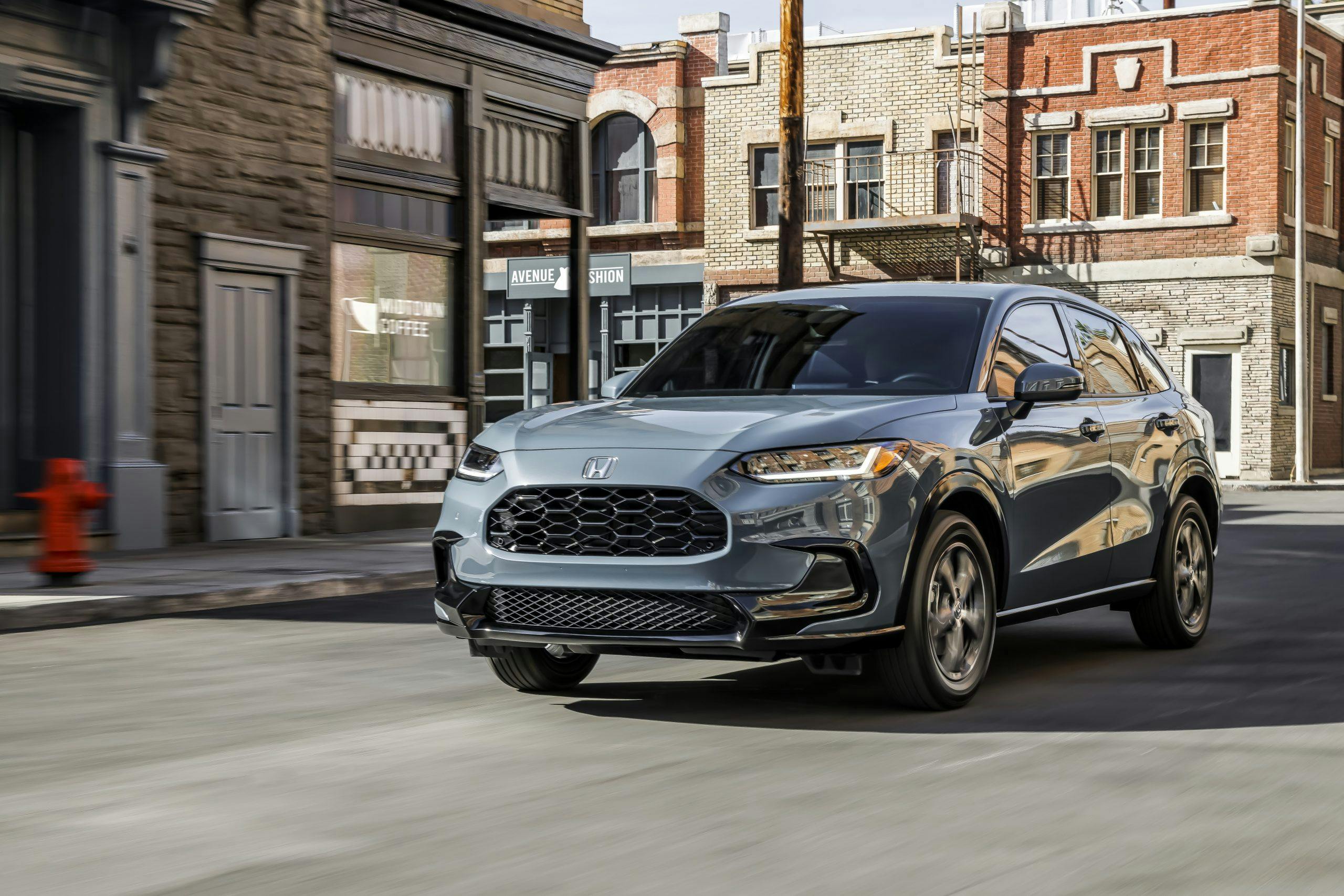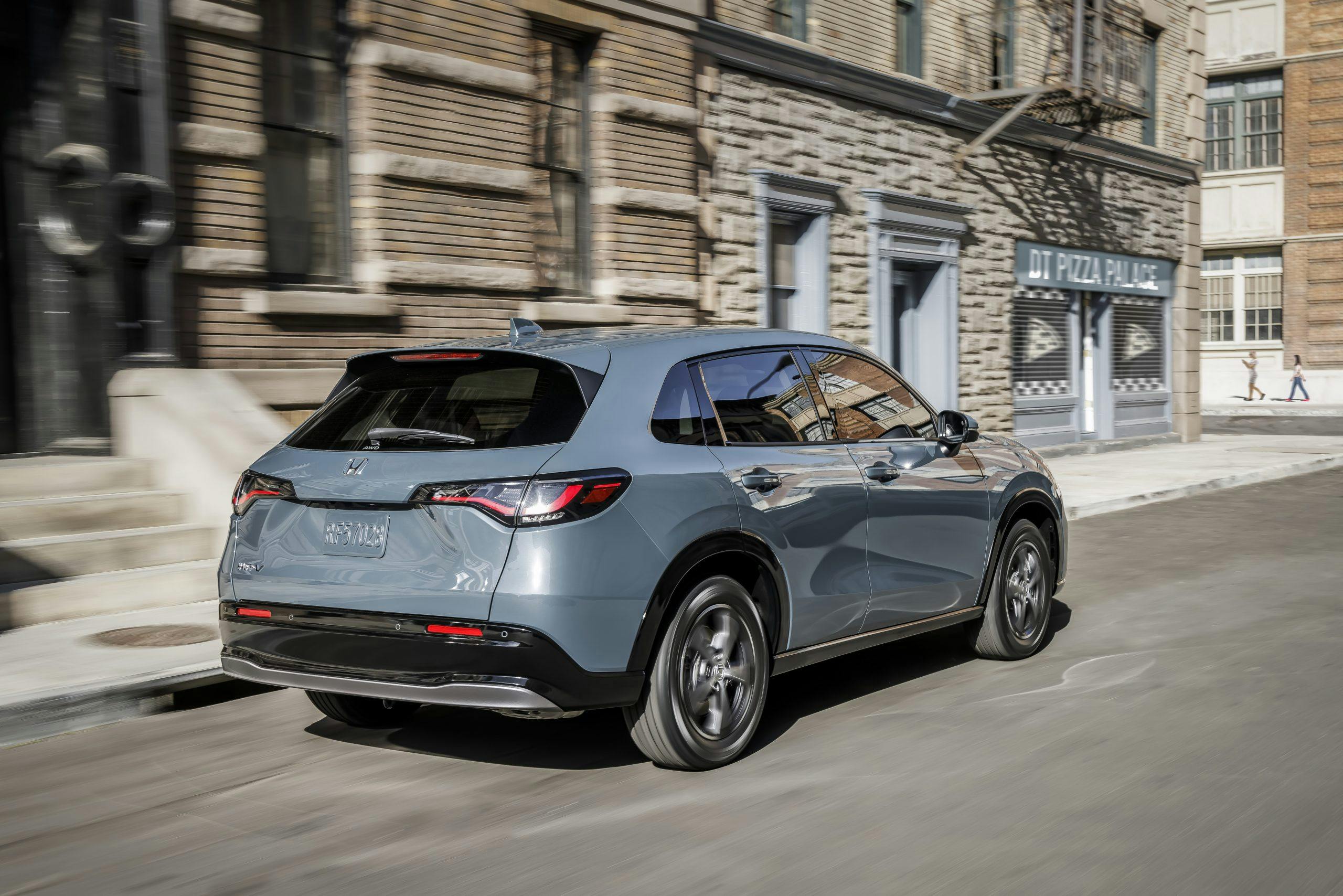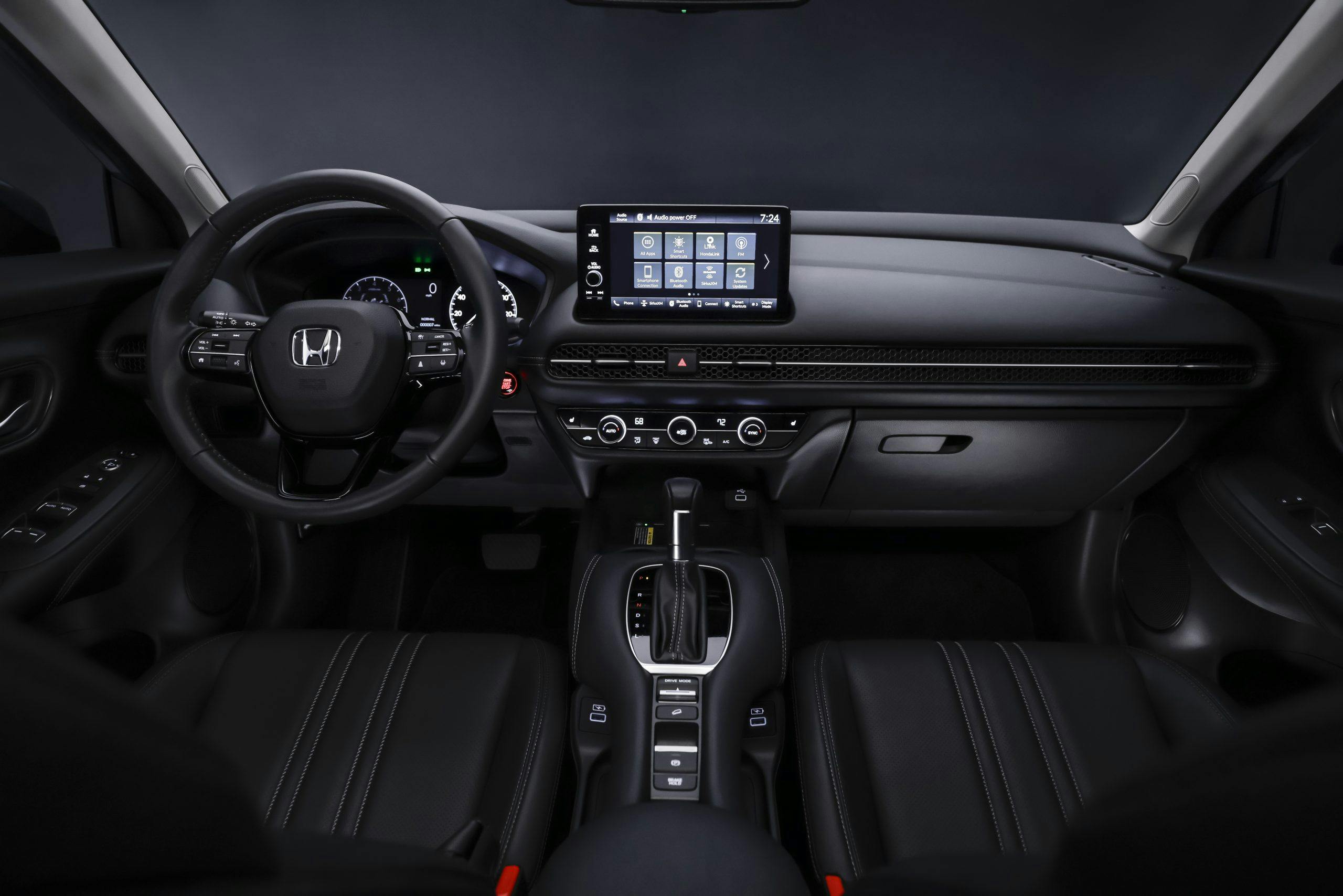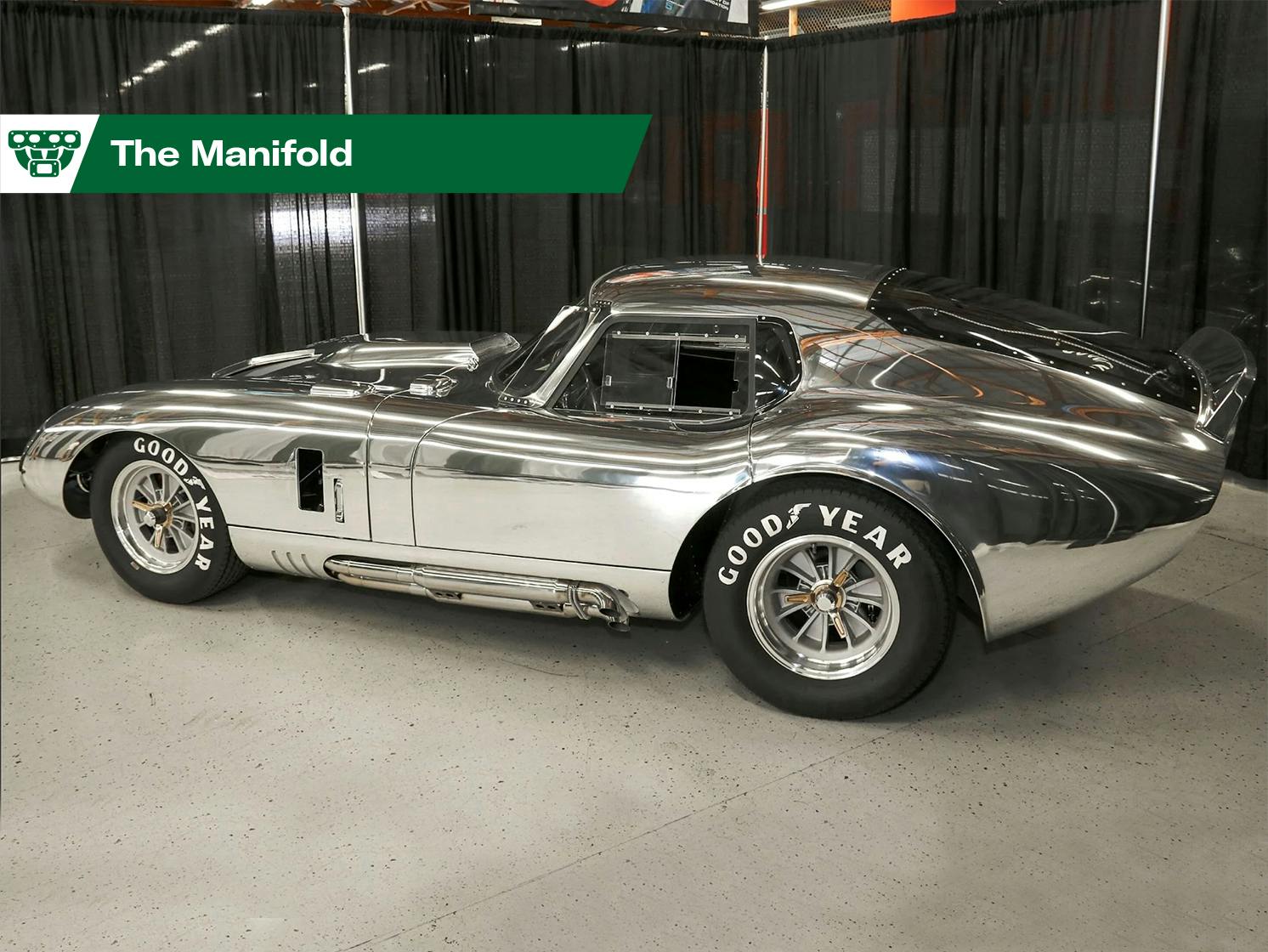Media | Articles
427 SOHC Cobra Daytona Coupe finally lives, CarPlay takeover, Polestar’s first SUV camo-free
427 SOHC Cobra Daytona Coupe: Carroll’s dream is real
Intake: The “427 Cammer” is the stuff of dreams for Ford aficionados—and Carroll Shelby, too. The legendary Ford racer and designer envisioned a world in which the Cobra Daytona Coupe ditched its small-block V-8 for the hyper exclusive, single overhead cam, 427-cubic-inch Ford FE engine. While Shelby had a Cobra Coupe lengthened to fit the big-block Ford motor, securing the elusive 427 SOHC mill before the 1964 Le Mans race was impossible. Enter Shelby American’s “continuation” big block Shelby Daytona Coupe, built to the same specs as the ’60s race car, complete with “an aluminum body over a 3-inch lengthened chassis” with hood modifications to clear the 427 SOHC. The car was officially unveiled at the Carlisle Ford Nationals, received the serial number CSX2623, and “will be shown throughout the year in celebration of Shelby American’s 60th anniversary.”
Exhaust: Dreams don’t become reality very often, but anything is possible when the stars align in the automotive aftermarket. While availability and pricing wasn’t given for those interested in taking home a 427 SOHC Cobra Coupe, a “regular” coupe retails for $324,995 (aluminum body) or $124,995 (fiberglass) without a powertrain. A quick peek at Jon Kasse’s website (a likely vendor for this project) suggests a 427 SOHC motor retails for $55,000. (That’s for a recreation of the original design using modern parts, not a period mill.) Certainly not chump change, but it’s hard to put a price on a vehicle that was impossible to make just a few years ago.
BMW’s first-ever M3 wagon will debut … in England?

Intake: BMW is taking center stage at the Goodwood Festival of Speed. Celebrating 50 years of its M division, the German brand will exhibit a specially commissioned tribute sculpture on the Goodwood lawn and premiere its first-ever M3 Touring. (3 Series wagons we’ve had aplenty, but never a long-roof version of the M version.) The performance wagon will appear in public on Thursday, June 23, and make daily demonstration runs up the famous hillclimb throughout the event. The M4 CSL will also be on show, and among the many M cars hairing up the hill will be the Le Mans-winning V12 LMR and Nelson Piquet’s 1983 F1 World Championship car, the Brabham BMW BT52. Tune in to Goodwood’s YouTube channel to watch all the action.
Exhaust: You won’t be seeing the M3 Touring in the U.S.A., as BMW isn’t importing it, so catching it at Goodwood will be your best chance to watch it perform.
2023 HR-V wins on power, price; slips on efficiency and trunk room
Intake: Honda’s tiniest SUV is growing up. After adopting the 11th-gen Civic’s architecture, the HR-V is 2.6 inches wider and 9.4 inches longer tip to tail, with a 1.7-inch increase in wheel base yielding more leg room for rear seat occupants. Thanks to a different rear suspension design (fully independent versus the Honda Fit–derived torsion-beam setup), ride refinement will likely improve, though cargo area with the seats up is nearly identical (24.4 vs 24.3 cubic feet) and, with the rear row folded, actually worse than in previous model (55.1 vs. 58.8). The driver and front passenger will be happier, however, facing a neatly organized, handsome dash essentially lifted from the 2022 Civic. A 7-inch touchscreen comes standard on the LX and Sport models, and the EX-L (gone is the EX trim) boasts a 9-incher. Even though the HR-V makes do with the mildest Civic powerplant, the 2.0-liter four-banger generates 17 more hp and 11 more lb-ft of torque than the previous four-pot. Each of the three trims is available in front- or all-wheel-drive. Fuel efficiency, surprisingly, worsens slightly: the outgoing car posted 28 mpg city and 34 highway; the 2023 model, 26/32 if you pick the front-drive model. (25/30 for the AWD trims.)
Marketplace
Buy and sell classics with confidence
Exhaust: The drop in fuel efficiency isn’t a great look for the new HR-V. That said, the decrease is minor, and we expect the 2023 car to be vastly more refined inside and out when it comes to ride, aesthetics, and tech. We’re most impressed by Honda’s control of the base price: The 2023 model’s MSRP only increases by $535 … though keep in mind that destination is still an eye-watering $1200+.
Soon, Apply CarPlay will populate every screen in your car
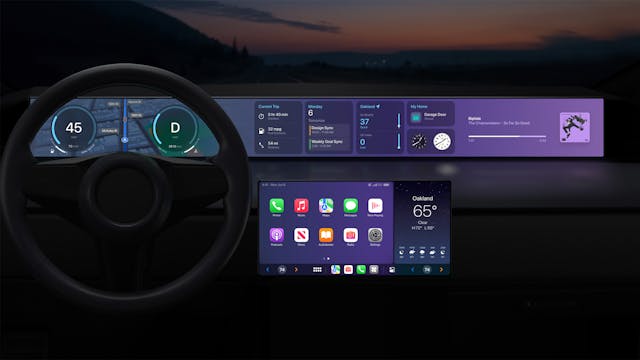
Intake: Apple unveiled its newest operating system, iOS 16, yesterday. Among the updates included, there’s a large emphasis on CarPlay, the tech company’s integrated user experience that will substitute your car’s existing infotainment screen for an interface that mirrors that of your iPhone. The newest updates will see CarPlay take over more screens in your car, such as the digital instrument cluster just ahead of the steering wheel. Apple says that the next generation of CarPlay will provide content for multiple screens to create a unified and consistent experience. You’ll be able to control other functions of the car besides just your podcasts and navigation, including climate control, speedometer, fuel level, and more. The tech will feature configurable widgets and gauge cluster designs, at-a-glance info for weather and music, and more.
Exhaust: CarPlay integration is a major driving force behind the modern consumer’s car purchasing decisions, so this increased level of integration is hardly surprising. Car companies aren’t all that great at tech-based user experience—just look at some of the woeful interfaces on things like the outgoing Lexus models that utilized twitchy trackpads. It makes sense that they’re willing to hand over the UI work to companies like Apple, who already have such a strong presence in many individuals’ everyday lives through their phones, iPads, and computers. As cars become increasingly screen-based, automakers are clearly embracing the added benefits of mirroring tech like CarPlay. The move also helps Apple collect mountains of additional data to improve Apple Maps, one of the few known weak points in the iOS ecosystem. More concerning than the quirks of Apple Maps is how much privacy customers will sacrifice for this undeniably slick, familiar interface—not simply what and where they shop and drive, information to which Apple is already privy, but the nuances of their driving behavior. This trove of customer data is the true honeypot for Apple.
Gordon Murray to follow analog hypercars with electric SUVs

Intake: Gordon Murray’s automotive ambitions are turning to the mainstream. After the multi-million-dollar analog V-12 T.50 and T.33 hypercars Murray’s next vehicles will be a pair of affordable electric SUVs, reports Autocar. One car will be sold under the Gordon Murray Automotive brand, while the other is under development for another carmaker. Murray says that his approach to this booming market will “change the way we think about range anxiety and vehicle dynamics.” Assuming that these E-SUVs follow Murray’s methods, they’ll be lightweight, compact, aerodynamic and hyper-efficient. “It can’t be correct to have family cars routinely weighing 2.5 tonnes, yet everyone’s piling into the thing the way OEMs do. We think there’s a better way,” Murray tells Autocar.
Exhaust: Ever since Murray unveiled his iStream production method way back in 1998, we’ve been waiting to see it applied to volume production. Using Formula 1-derived materials and methods, Murray says multiple vehicles can be built on the same line, requiring much less investment than a traditional car plant. The vehicles produced are also considerably lighter and have much smaller carbon footprint than conventionally built cars. More to the point, Murray’s boutique shop could afford to experiment with more exotic solutions to the problem of battery weight and energy density than a larger firm, which would be operating with thinner profit margins and at higher volume, could justify.
Unrestored Austin Healey will make you smile like Jay Leno
Intake: In the realm of little British cars, one stands alone for the smile-on-the-face factor: The Austin Healey Sprite. Early version have the nickname of “bugeyes,” and for good reason. Just one look at the froggy front end design will put you in a good mood. The driving experience is no let-down, either, as Jay Leno shows with his well-preserved example this week on Jay Leno’s Garage. The tiny sports car might not pack power, but it comes in heavy with fun factor.
Exhaust: The four-cylinder engine under that big clamshell hood displaces only 948 cc, but that is really all that is needed to have a good day of driving on the California canyon roads that surround Jay’s shop. Millions of bugeye Sprites are out there, bringing affordable, open-air fun to the street or track. Probs to Jay for celebrating the little guys.
First look at Polestar 3 SUV, which will be made in America
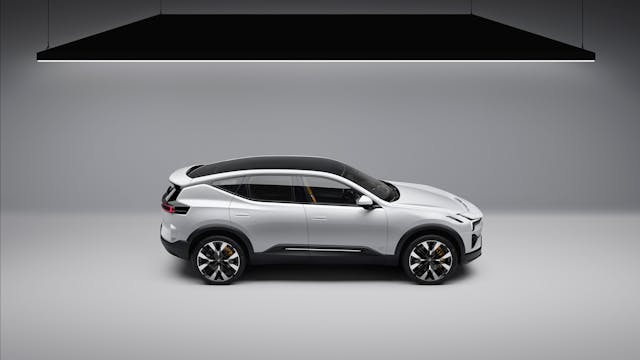
Intake: Here for the first time undisguised is Polestar’s first all-electric SUV. Following the low-production, hybrid 1 coupe and the all-electric Polestar 2 liftback, the 3 will officially debut in October of 2022. Unlike the China-built 2, the 3 will be built at Volvo’s plant in Charleston, South Carolina, which currently builds the S60 and is scheduled to convert to EV-only production. (Both Volvo and Polestar are owned by Geely, and the former holds a majority stake in Polestar, whose name used to grace its factory-backed racing team.) The North American production site will be in addition to a Chinese one, indicating that Polestar is expecting the SUV to be a big hit stateside. The 3 will rival Tesla’s Model Y, VW’s ID.4, and Ford’s Mustang Mach-E. Polestar’s first SUV will debut in dual-motor spec, but, judging from the 2 rollout, it’s logical that a single-motor variant will follow with a shorter range and a lower cost.
Exhaust: From our experience with both variants of the 2, Polestar has the resources, the savvy, and the styling to offer a compelling alternative to the fan-favorite Tesla. This SUV will test the brand’s ability to woo a particularly discerning clientele: couples and small families who typically have higher expectations of everyday usability and lower tolerance for inconveniences, however stylishly packaged. We have high hopes.


